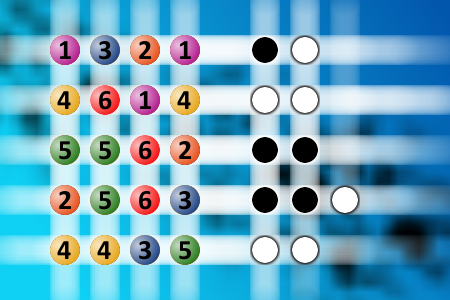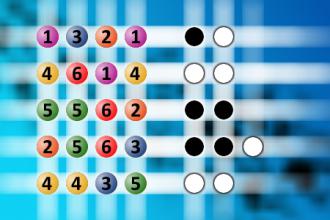What a winning combination?
The computer chose a secret code (sequence of 4 digits from 1 to 6). Your goal is to find that code. Black circles indicate the number of hits on the right spot. White circles indicate the number of hits on the wrong spot.Correct answers: 4
#brainteasers #mastermind

An old blind cowboy wanders in
An old blind cowboy wanders into an all-girl biker bar by mistake…
He finds his way to a bar stool and orders a shot of Jack Daniels.
After sitting there for a while, he yells to the bartender, ‘Hey, you wanna hear a blonde joke?’
The bar immediately falls absolutely silent.
In a very deep, husky voice, the woman next to him says, ‘Before you tell that joke, Cowboy, I think it is only fair, given that you are blind, that you should know five things:
The bartender is a blonde girl with a baseball bat.
The bouncer is a blonde girl with a ‘Billy-Club’.
I’m a 6-foot tall, 175-pound blonde woman with a black belt in karate.
The woman sitting next to me is blonde and a professional weight lifter.
The lady to your right is blonde and a professional wrestler.
‘Now, think about it seriously, Cowboy... Do you still wanna tell that blonde joke?’
The blind cowboy thinks for a second, shakes his head and mutters,
‘No...not if I’m gonna have to explain it five times...’
He finds his way to a bar stool and orders a shot of Jack Daniels.
After sitting there for a while, he yells to the bartender, ‘Hey, you wanna hear a blonde joke?’
The bar immediately falls absolutely silent.
In a very deep, husky voice, the woman next to him says, ‘Before you tell that joke, Cowboy, I think it is only fair, given that you are blind, that you should know five things:
The bartender is a blonde girl with a baseball bat.
The bouncer is a blonde girl with a ‘Billy-Club’.
I’m a 6-foot tall, 175-pound blonde woman with a black belt in karate.
The woman sitting next to me is blonde and a professional weight lifter.
The lady to your right is blonde and a professional wrestler.
‘Now, think about it seriously, Cowboy... Do you still wanna tell that blonde joke?’
The blind cowboy thinks for a second, shakes his head and mutters,
‘No...not if I’m gonna have to explain it five times...’

